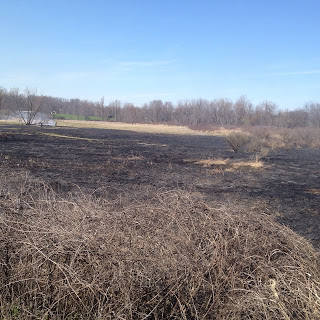As we close out the 100th anniversary of Nation Fire Prevention Week, I thought I’d take a quick look at the history of firefighting.
You might want to brace yourself, we’ll be moving fast.
Fire was discovered by Adam, who was kicked out of the Garden of Edan because of an apple—making it the first core-pral punishment. It gets darned cold in the real world, but Adam could only find one stick, so he made a fire by rubbing it against a Cain. This led to emotional problems with Cain later on; he tried to cope, but wasn’t Abel.
Ancient Egyptians experienced fire problems when a column of fire led the Jews out of bondage. The Jews were followed by the Pharaoh and his army, who were sore about being plagued. Pharaoh then took his army to the Red Sea, figuring it would water down the flame.
The soldiers drowned, much to the sorrow of their mummies. The Pharaoh himself was unusually tall, and waded back to shore: To this day, when someone measures the intensity of fire, they speak of degrees in Pharaoh Height.
The Roman Empire invented the first fire extinguisher, which looked like a big syringe. Their first firefighters were slaves, and when the syringe wasn’t effective they were just thrown on the flames until the fire was smothered. Everyone was satisfied with this arrangement. Except the slaves.
Benjamin Franklin helped found the earliest organized fire force in the New World. He also flew kites in thunderstorms, thumbed his nose at the most powerful empire in the world, and had indiscriminate sex with dozens of women. And so, to this day, firefighters are assumed to be crazy.
(It turns out Franklin was literally a founding father.)
The AFD hose reel was much more effective when it had hose on it.
Fast forward (a lot) to Albion in 1887, when a major fire burned down an entire block, townspeople were disturbed to learn they couldn’t find a decent cup of coffee: All the restaurants had cooked. After a week without java the townspeople voted to fund either a fire department, or a coffee house. If the vote had gone the other way, we’d be forming coffee cup brigades.
The Albion Fire Department consisted of a chief, an assistant chief, three foremen, a designated Coffee Rescue Team (they just couldn’t get over the infamous “Week Without a Cup”)—and the entire population. It took a dozen people to pump the water by hand, and another dozen to make the coffee. In an emergency the coffee would be pumped onto the fire, if they felt they had the grounds.
When volunteers ran (literally) to their first call they found they had no hose, which watered down their effectiveness. Luckily, it was only the courthouse burning, not the coffee house. Just the same, they added a hose cart to go with the pumper. Today’s fire trucks carry pumps and hose together, along with modern marvels such as instant coffee.
The third original AFD apparatus, a hook & ladder, carried hooks .., and ladders. The hooks could be used to pull down flaming roofs, walls, and Pharaohs. The ladders were used to rescue sacks of coffee. (No Pharaoh was harmed in the writing of this article.)
The AFD became motorized in 1929, and still owns that very first truck. We’re that cheap.
It still pumps! You know ... just in case.
On spotting a fire citizens would say something descriptive, like “fire!” and, being firefighters, the firefighters faithfully fought the fire’s fury. Rural homes were on their own, being out of shouting range. But firefighters hate to see fire without putting water on it; families have been torn apart at cookouts, after someone starts the grill, and a firefighter relative throws all the beer on it. So the AFD bought a water tanker, so they could haul their own supply. Of water, not beer.
Other changes came quickly. With four wheel drive trucks, firefighters didn’t have to wait for a wildland fire to come to them, especially since it sometimes didn’t want to. Besides, while they were waiting some other moron with a match … ahem … another wildland fire might break out.
Air packs were developed so firefighters can go into toxic atmospheres and keep their lungs healthy, so they didn’t have to give up smoking.
And then: I was born.
This is the most flattering fireground photo of me I could find.
This is not a date ordinarily observed at our firehouse. No, I don’t know why.
Back then we didn’t wear our protective clothing much. In fact, when I responded to my first house fire I’d been issued: boots. Just boots.
Well, I wore jeans and a t-shirt, let’s not get silly.
Today we’re covered head to toe in materials developed for really dangerous professions, like astronauts and talk show hosts. The air tanks are so light, we sometimes forget to take them off. Imagine the strange looks we get in the grocery store checkout lane.
Who knows what’s in store for the future? Maybe we’ll have cameras that can see through smoke, lightweight air tanks, computers, and portable radios we can just clip on our belts. Oh, wait … we have those.
But we’ll keep the old ’29 engine. Just in case.
Find our books at: http://markrhunter.com/
https://www.amazon.com/-/e/B0058CL6OO
https://www.barnesandnoble.com/s/"Mark R Hunter"
And check out the Albion Fire Department's history in Smoky Days and Sleepless Nights: A Century Or So With the Albion Fire Department.





























